#inari daimyojin
Explore tagged Tumblr posts
Text
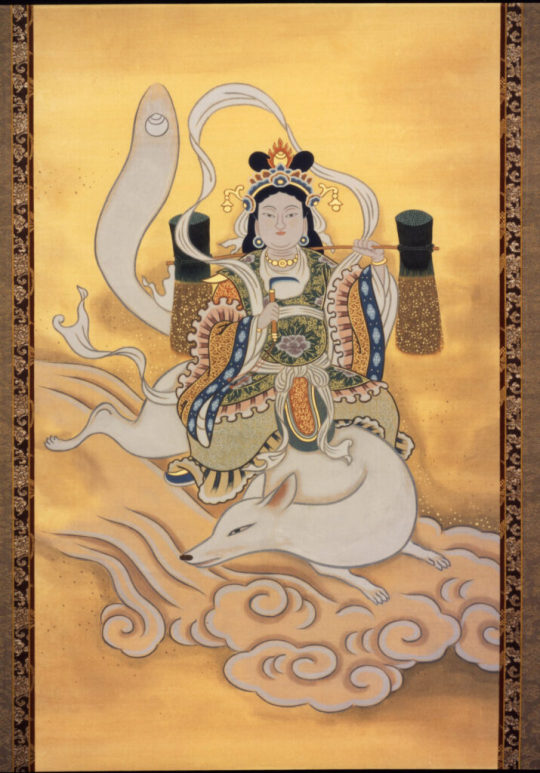
Inari Daimyōjin (稲荷大明神) as a goddess riding a fox from Saijō Inarisan Myōkyōji Temple (最上稲荷山妙教寺) in Okayama City, Okayama Prefecture
Image from the temple's official website
#japanese art#buddhist art#稲荷#inari#稲荷大明神#inari daimyojin#岡山県#okayama prefecture#岡山市#okayama#妙教寺#myokyoji#最上稲荷山妙教寺#saijo inarisan myokyoji#日蓮宗#nichiren buddhism#nichiren#arte budista#arte japonés
66 notes
·
View notes
Text

Namu Myoho Renge Kyo.
Statue of Inari Daimyojin
Nichiren Buddhist Sangha of Greater New England
#saijo inari#inari shrine#inari Okami#inari#inari daimyojin#nichiren shu#nichiren buddhism#nichiren#shinto#namu myoho renge kyo#Nam Myoho Renge kyo
36 notes
·
View notes
Text

A thing based on Psycho Fox.
Madfox Daimyojin and some designs for some of his fellow fox priests, who he'd supplant to take over the Inari Shrine, and via the creatures sealed with in, the Inari Islands.
106 notes
·
View notes
Text
Photos: The Path to Inari
Probably the most famous shrine in Kyoto is the Fushimi Inari Shrine. This is the shrine the the tunnel of red gates. What many people don’t know is that the neighborhoods surrounding that shrine have their own smaller Inari Shrines. This one is called Gosha Daimyojin. These shrines are kept and maintained by the people living in the neighborhoods. I visited this shrine while walking to the…
0 notes
Text
0000 Warbunton Shrine | 0001 Doroshi Hachimangu | 0002 Hamamura Shrine
0003 Katakana Shrine | 0004 Mishima Shrine | 0005 Bazumitama-sha
0006 pomponne Shrine | 0007 Eifuku Shrine | 0008 Eifuku Temple
0009 Cue Gri Jinja | 0010 Princess Shrine | 0011 Tonarino Shrine
0012 Laem Shrine | 0013 Para Shrine | 0014 Kuroneko Jinja
0015 Yasaka Jinja | 0016 Tenmangu Jinja | 0017 Itame Ham Shrine
0018 Japonica Shrine | 0019 Neochi Shrine | 0020 Okinawa Shrine
0021 Kokuryu Shrine | 0022 Ni Jinja | 0023 Piyopiyo Shrine
0024 Noha Shrine | 0025 Saihate Inari Shrine | 0026 Koyagi Shrine
0027 Hamstar Shrine | 0028 Haiku Shrine | 0029 Sen-Cat-Shrine
0030 Venezia Shrine | 0031 Hinamizawa Shrine | 0032 Kanaru Shrine
0033 Mr. Louis Shrine | 0034 Susukino-Inari Jinja | 0035 Shiki-Shinto Shrine
0036 Apo Hachimangu
0037 Salmaru Grand Shrine 猿丸大神宮:
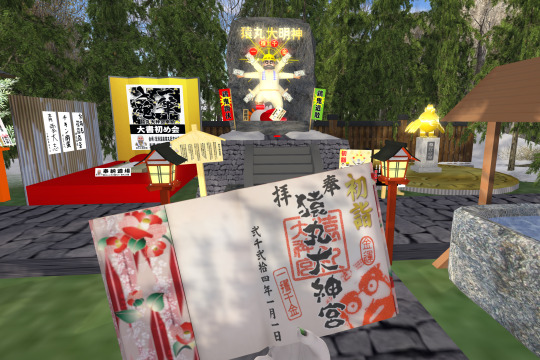
Right off the Ashiyu Onsen Station of the Saitama Metro (and next to the onsen itself), Salmaru Grand Shrine enshrines Salmaru Daimyojin, who descended to SL as a builder. As you might be able to guess from the bills his statue holds, he conveys good financial luck! If you skip one stop on the list, 0039 Son Clave Shrine is right there next to it, and you can pick up both goshuin at the same Shrine office.
Goshuin Project 2024
0038 Il Micio Shrine | 0039 Son Clave Shrine | 0040 Drobak Shrine
0041 SnowPastel Shrine | 0042 Nadeko Shrine | 0043 Katsudon Shrine
0044 Mambo Shrine | 0045 Sessha Mambo Shrine | 0046 Umigami Shrine
0047 Yozakura Shrine Ocean | 0048 Sakura Shrine | 0049 Akiba Inari Shrine
0050 Lazy Shrine | 0051 Honpou Inari Jinja | 0052 Togetsu Jinja
0053 Neko Jinja | 0054 Kusanagi Shrine | 0055 Ouse Jinja
0056 Nekoma Shrine | 0057 Lion Temple | 0058 Usagi Shrine
0059 Kiyomizu Temple | 0060 Kingyo Jinju | 0061 Azuki Shrine
0062 Megumi Jinja | 0063 Sea Butterfly Shrine
0 notes
Photo

伏見稲荷大社 京都の名所
伏見稲荷大社(ふしみいなりたいしゃ)は、京都市伏見区に位置する、日本でも有名な神社の一つです。この神社は、稲荷大明神を祀った社であり、特に「千本鳥居(せんぼんとりい)」で知られています。 伏見稲荷大社は、稲荷神を祀る神社として非常に古い歴史を持っています。神社の創建は古く、稲荷神は豊穣や商売繁盛、そして災害からの保護の神として信仰されています。 この神社の特徴は、千本鳥居の参道です。参道には大小さまざまな朱塗りの鳥居が連なっており、それが続く風景は非常に印象的です。鳥居は寄進されたもので、多くの企業や個人が自身や事業の繁栄を祈願して寄進しています。 また、山岡家ゆかりの赤い玉ねぎをモチーフにした「赤玉子」や、「絵馬」なども有名です。観光客は参拝や写真撮影の他にも、お土産を購入したり、願い事を込めて絵馬に願い事を書くことができます。 伏見稲荷大社は、観光客だけでなく、地元の人々からも信仰を集める重要な神社であり、年間を通じて多くの人々が訪れています。特に新年や秋の紅葉の時期には非常に混��し、多くの人々が訪れます。
♪♫♬🎤🎹🎶♪♫♬🎤🎹🎶♪♫♬🎤🎹🎶♪♫♬🎤🎹🎶
Fushimi-Inari Taisha famous places in kyoto
Fushimi Inari Taisha is one of the most famous shrines in Japan, located in Fushimi Ward, Kyoto City. This shrine is dedicated to Inari Daimyojin, and is especially known for its ``Senbon Torii''. Fushimi Inari Taisha has a very long history as a shrine dedicated to the god Inari. The shrine was founded a long time ago, and Inari is believed to be the god of fertility, prosperous business, and protection from disasters. The main feature of this shrine is the 1,000 torii gates leading to the shrine. The approach to the shrine is lined with vermilion-painted torii gates of various sizes, and the scenery is very impressive. Torii gates were donated, and many companies and individuals donate them to pray for the prosperity of themselves and their businesses. Also famous are the ``red egg'' with a red onion motif, which is associated with the Yamaoka family, and the ``ema'' (votive tablet). In addition to visiting the shrine and taking photos, tourists can purchase souvenirs and write their wishes on votive tablets. Fushimi Inari Taisha is an important shrine that attracts worship from not only tourists but also local people, and is visited by many people throughout the year. It is very crowded, especially during the New Year and the autumn leaves season, when many people visit.
0 notes
Text
The Japan you don't know. God in the Rice Paddies, with Pictures of Japanese People 100 Years Ago
Tanaka Inari Daimyojin 3-21-33 Shimotakaido, Suginami-ku, Tokyo
Standing in a gap in a residential area, this sanctuary is located at the end of a narrow alley that one might easily pass by. For some reason, the torii gate is low enough to be entered by bending down.
Is it because of the danger of earthquakes, or is it because the torii gates of the Edo period were built at such a low height? Since many of those remaining today are low, was it made the same height as the torii gates of old?
I am a little concerned about this, but the clean precincts show the love of the local people who take care of this place.
It is a sanctuary that I am grateful for. https://youtu.be/Xm62kLsQgnM
0 notes
Text
enjoying the spring flowers in omura and saga

On a sunny day in April of this year, I visited several flower gardens with friends, one in my town of Omura and one in Saga called Mifuneyama Rakuen.
The garden we visited in Omura was up in the mountains called Matsumoto Azalea Garden. There were winding paths through large fields of bright blue flowers and hedges of azaleas. I think we just missed the period of full bloom, so many of the azaleas had darkened or turned green, but it was still breathtaking. I can't imagine how much more beautiful they are at full bloom.








Next we drove about an hour north into Saga prefecture to Mifuneyama Rakuen, which held another large azalea park nestled under the mountain. These azaleas too were not in full bloom, but the rows and rows of flower bushes lined up under the mountain was so beautiful. You could also climb up and walk between the bushes, and it felt like a bewildering maze of color.



The wisteria at the park were also starting to bloom, so we spent some time sitting under them enjoying their color and smell.

After climbing up part of the mountain through the flowers and woods, we saw an overgrown building through a gap in the trees. It looked kind of like a school. As Japan's rural populations shrink and more people move toward the convenience of nearby cities, many buildings are being forgotten and overtaken by nature like this.

The flower garden paths then lead into the forest and you can enjoy a short forest trail leading to a cave. This cave holds the Inari Daimyojin deity and is said to have been visited 1300 years ago by the famous priest Gyoki who carved 500 Arhats.

There was a small TeamLab exhibit at this park as well, so we decided to check it out. TeamLab creates interactive art exhibits that can be found all over the world, and some of the most famous ones are in Japan. I went to one in Tokyo and Fukuoka. If you want to read more about the exhibit in Fukuoka, my blog post is here.
This TeamLab exhibit was incredibly interesting because it was placed inside of an abandoned hot spring bath house. In the first room, we found an abandoned bath area covered in creatures and flowers made of light, which moved around the room. According to the TeamLab website, you can draw a picture of a creature and watch it come to life. In order to represent the process of life cycles, your creature may eat other creatures and multiply. TeamLab exhibits always have some deeper meaning behind their conception which makes you think more deeply about the world and your place in it.

The bath house where the exhibit is located is very interesting because the creators of the exhibit left most of the abandoned building untouched. When you walk through the building between exhibits, you can see rubble and dilapidated walls. It's very interesting and made the exhibit feel much more spiritual, like you are in a place that is forgotten and still stuck in the past.

The next part of the exhibit was a long hallway, lit by lanterns and eerily quiet. When you reach the end of the hallway, there is a simple flame crackling. The eternal flame can be found directly below the old forest above, and represents the everlasting quality of nature.


Next we entered the neighboring bathing room to find many impressive megaliths breaking out from beneath the earth. Each one was lit up and would alternate between different images. Being located in a forest with 3000 year old trees, the megaliths are supposed to represent "a mass made up of compressed space-times where the flow of times varies." According to the exhibit, the images projected on the megaliths are generated in real time by a computer program, never prerecorded or on a loop. Each moment is unique as the images constantly change, and the images will never be exactly the same. It was so beautiful and made me feel like just a speck in the vast space of time.


Next we walked into the attached hotel of the bath house, which still operates today. The lobby was filled with floating lanterns and mirrors, which gave the room the look that it stretched on forever. I honestly got lost walking around trying to find the exit and admittedly bumped into a few mirrors.

Lastly, we went into a dark room lit by only an exhibit of flames. The illusion of flames was created by a huge grid of tiny pinpoints of light. When you get closer to the grid, the flame gets brighter, and when you walk away it becomes smaller again.


Apparently there were more exhibits outside on the grounds of the park, but since they involve light they could only be viewed in the evening and we weren't able to see them. If you'd like to check them out, you can read more about them on the TeamLab website here!
Overall, this was a really fun and magical day, experiencing the beauty of the spring flowers and having an existensial crisis about the flow of time in the TeamLab exhibit. I hope you enjoyed reading <3
0 notes
Photo

Shoichii Inari Daimyojin . Inari Ōkami is the Japanese kami of foxes, fertility, rice, tea and sake, of agriculture and industry, of general prosperity and worldly success[citation needed], and one of the principal kami of Shinto.[wiki]
808 notes
·
View notes
Photo
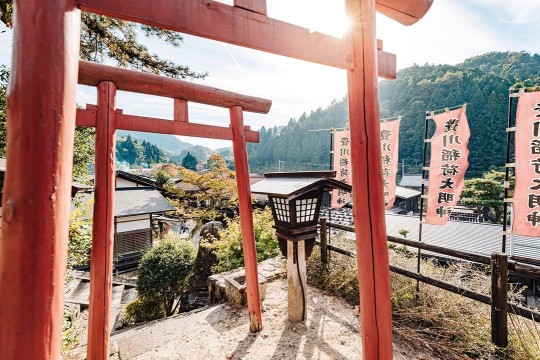
One of Japan’s 17th-century highways, the Nakasendō Way wound through the heart of the country’s main island, Honshu, linking the spiritual centre of Kyoto with the political hub of Edo (modern-day Tokyo). Pictured are the red torii gates that lead to the shrine of Toyokawa Inari Daimyojin in Tsumago village, along the route. View the full photo story on our website — link in bio // Photo by @mark_parren_t for the Nov/Dec 2020 issue of National Geographic Traveller (UK) — view on Instagram https://ift.tt/jNKHyxl
4 notes
·
View notes
Text
What to call Kami
It is extremely important to call kamisama by their respectful names, with the correct suffixes. It is disrespectful to do otherwise, and if done knowingly can cause “bachi”. Here I will tell you the rules for addressing them appropriately.
Commonly Seen Suffixes
大御神: Omikami. Omikami is the highest title, and only 2 kami have it: 豊受大 御神 Toyouke Omikami and 天照大御神 Amaterasu Omikami.
稲荷大神: Inari Okami. Okami means ‘Great Kami’, and other kamisama who are seen as especially powerful get this suffix.
様: “-sama”. It is the respectful suffix to use for someone in general in Japanese, and a safe option. Example: 伊邪那美様 Izanami-sama
Other Common Suffixes
大明神: Daimyojin. It is the respectful suffix, meaning “Great Bright Kami”. Usually indicates renown or some level of fame, similar to Okami.
明神: Myojin, same as above except meaning “Bright Kami”. Example: 神田明神 Kanda Myojin
尊 or 命: “-no-Mikoto”. Another respectful suffix that is only used for specific kami. Example:伊弉諾尊 Izanagi-no-Mikoto
姫 or 売命: “-hime”. Only used for female/feminine kami, sometimes followed by “-sama” or “-no-Mikoto”. Example: 須勢理毘売命 Suseribime-no-Mikoto
天: “-ten”. Only used for Buddhist figures, originally meaning “deva” in Hindi. Is still usually followed by “-sama”. Example: 弁才天
139 notes
·
View notes
Text

An ofuda talisman depicting Inari Daimyōjin (稲荷大明神) as a goddess riding a fox from Saijō Inarisan Myōkyōji Temple (最上稲荷山妙教寺) in Okayama City, Okayama Prefecture
#buddhist art#御札#talisman#稲荷#inari#稲荷大明神#inari daimyojin#岡山県#okayama prefecture#岡山市#okayama#妙教寺#myokyoji#最上稲荷山妙教寺#saijo inarisan myokyoji#日蓮宗#nichiren buddhism#nichiren#arte budista
47 notes
·
View notes
Text
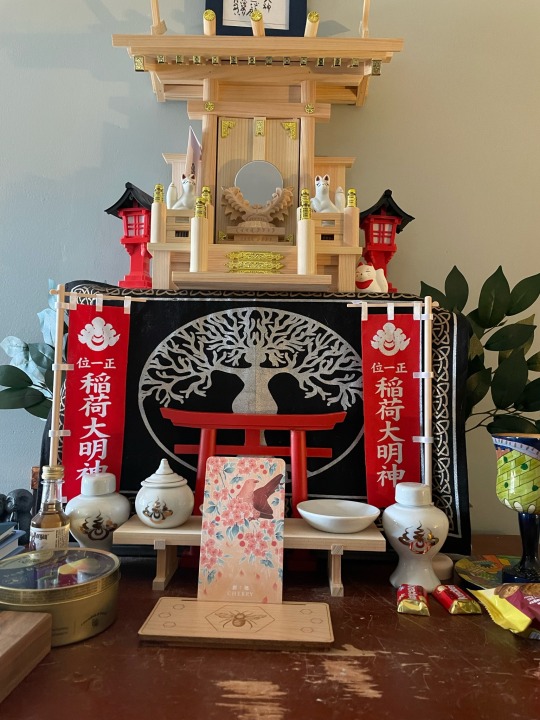
Sakura season
#sakura#cherry blossum tree#cherry blossom#kamidana#shinto#shinto shrine#shintoism#Inari Okami#Inari Daimyojin#konkokyo#konko faith
7 notes
·
View notes
Photo

Mobius Megamix CG - Psycho Fox
=== A young fox from Inari Island. When the land was taken over by a rogue priest, the remaining priests of the Inari Daimyojin chose him as the hero to defeat the tyrant and restore the shrine of the fox deity as well as the order of the land. === Name: Psycho Fox Type: M/Fox Height: 3'0 Weight: 50 lbs Blood Type: A Birthday: Jun 1 From: Mystical Mountains Likes: Birdflies, Sumo Dislikes: Lightning --- He looks ordinary, and by his own admission is easily hurt, but he's nimble, and his punches pack a wallop. More importantly, his is able to transform between a fox, gorilla, hippo and Tiger form with the aid of a psycho stick, each affecting his speed and strength. Whether this is thanks to the aid of the priests or through natural ability is somehow unknown. --- [Origin: Psycho Fox]
40 notes
·
View notes
Photo

More Ikebukuro shrines in the snow
https://blukats.blogspot.com/2020/06/back-to-enshu-inari-daimyojin-and-more.html
2 notes
·
View notes
Photo
Her little shrine...It has little cat statues at the sides like how Inari Okami ones have foxes at the sides...AND THEY ARE LITTLE TAMA DAIMYOJINS DOING THE MANEKI NEKO POSE.

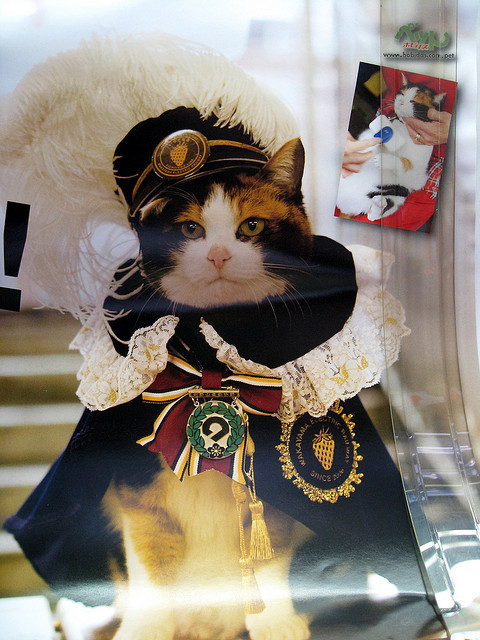
Source
Video of Tama
Follow Ultrafacts for more facts
1M notes
·
View notes